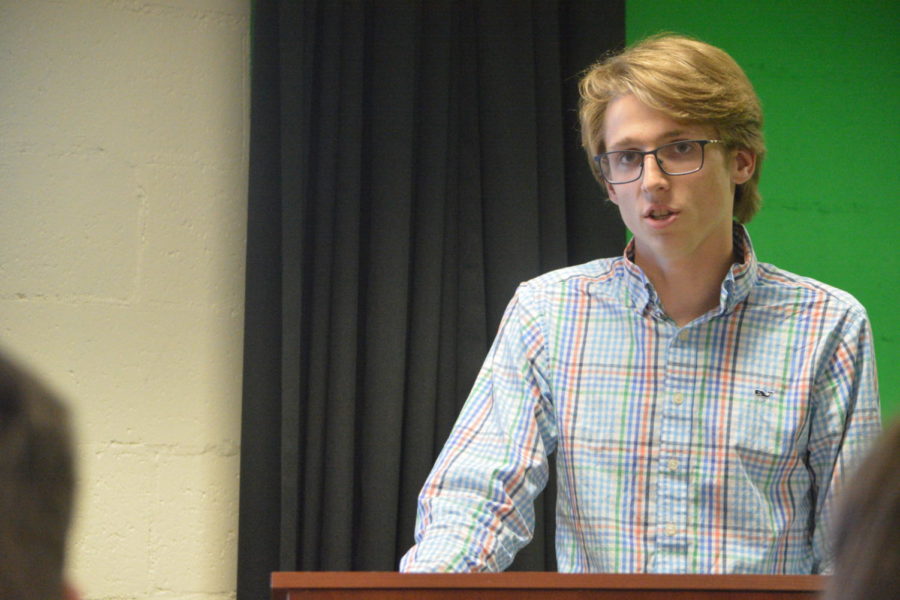Capstone students final presentations, sharing their growth
Ready to present– Senior Patrick Shea presents his product after taking the Healthcare21 capstone course. Shea was one of many students who presented. Presentations began May 20 and will run until June 3.
May 20, 2019
Throughout the year, all capstone students have been working and preparing to share their products at their final presentations. The capstone presentations started on May 20 and will end on June 3, located in either the Career Center or the Edge Media Space.
Each student has to accommodate specific requirements in their final presentations, such as being 15 to 20 minutes in length, having multimedia, and having at least five attendees.
“I really enjoy the capstone presentation season. It is exciting to see the range and variety of student interests coming together to showcase their work. If the students have taken the project seriously and kept up with the challenges of a long term project, each presentation feels like a celebration of a journey that the student has shaped through her or his unique interest and perspective,” English teacher James Carter said.
Within the multimedia portion of the presentation, the three components that need to be included are what the student did, what the student learned academically and personally, and how and why this capstone experience was meaningful to the student. In addition to these requirements, the overall goal is for each student to deliver a synthesis of their learning academically and experientially and discuss their future plans.
During the presentations, students explain the process of their capstone project. Following the presentation, a session of questions and answers occurs where the audience is able to receive answers to their questions that weren’t discussed in the presentation.
Additionally, either a teacher or members from the steering committee grade the students’ presentations based on the Capstone Final Presentation rubric. The steering committee is a group of 12 faculty staff/administrators, and their purpose is to help guide the capstone program.
There is a minimum of 2 teachers and/or member of the steering committee present at each student’s presentation. The rubric criteria that the students are graded on consist of four sections, which are communication, organization and preparation, content, and media.
“Last year, I saw [2018 alumnus] Dylan Suffredinis’ capstone presentation and his driving question was in what ways have refugees impacted Connecticut and how can the community help them? He is now attending the University of Chicago and majors in Political Science,” Information Literacy and Learning Technologies Department Leader Kelly Stokoe said.
This year students presentation topics ranged from psychology to engineering and law.
“I took Custom Capstone, and my project revolved around positive and clinical psychology where I created a stress group for students. My presentation consisted of the thorough research I had to complete and the schedule of my stress groups. I really enjoyed sharing my progress on the world of psychology with my community,” senior Elise Dudley said.
Students were also given the option to give their final presentations at Expo Fest, which is an event that allows Connecticut students to share their year-long project. Awards are presented to standout projects at Expo Fest.


